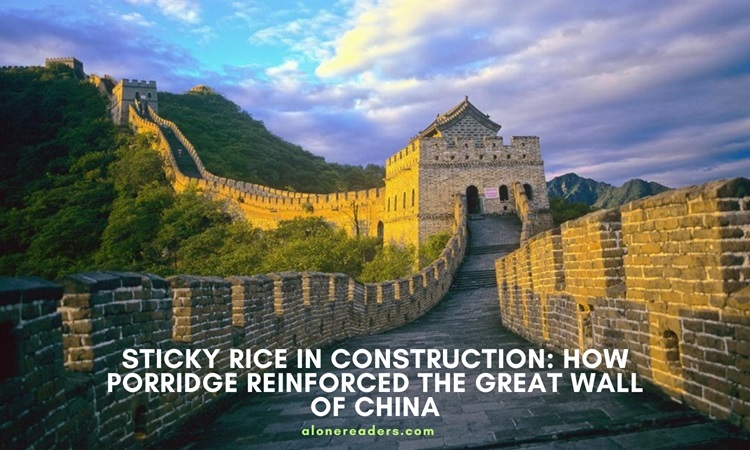
The Great Wall of China, an iconic symbol stretching hundreds of kilometers across eastern Asia, is not just a testament to ancient China's military might and technological prowess. A fascinating aspect of this over 2,000-year-old marvel is its construction technique, particularly the use of a unique mortar that contributed significantly to its longevity. Researchers at Zhejiang University have unearthed a surprising ingredient in this mortar: sticky rice soup, or congee.
The study conducted by researchers at Zhejiang University involved analyzing mortar samples from the Great Wall and other ancient Chinese structures. What they found was astonishing - the mortar was a composite made of slaked lime and congee. Congee, a rice porridge akin to pudding, is a staple in Asian cuisine. But its role in construction, particularly in such a monumental structure as the Great Wall, was previously unknown.
The secret to the strength and durability of the mortar lies in a complex carbohydrate found in the congee called amylopectin. Amylopectin, in combination with the calcium carbonate from lime, plays a critical role in the mortar's resilience. It prevents the formation of calcium carbonate crystals, which are often the weak points in construction materials. This unique blend allowed the ancient structure to withstand not just the test of time but also natural disasters like earthquakes and the impact of modern machinery.
Interestingly, the use of this sticky rice-lime mortar was predominant in the well-preserved sections of the Great Wall dating back to the Ming dynasty (14th to 17th centuries). This was several centuries after the initial phases of the Great Wall's construction. The earliest parts of the Wall, constructed far before the 5th century CE, did not use this technique. The adoption of sticky rice mortar in later centuries demonstrates a significant advancement in ancient Chinese construction methods.
The inclusion of sticky rice porridge in the mortar is not just a fascinating historical fact; it also highlights the ingenuity and resourcefulness of ancient Chinese engineers and builders. This discovery underscores how materials commonly used in everyday life, like congee, were repurposed in innovative ways to solve architectural challenges. The Great Wall, thus, stands as a symbol of not just military strength but also of the versatility and creativity of ancient Chinese culture.
The findings of the Zhejiang University researchers are not just of historical interest. They offer valuable insights into sustainable construction practices and the use of organic materials in building. The sticky rice-lime mortar is a prime example of an early form of bio-composite material, which has implications for modern-day sustainable building practices. It highlights the potential of using natural, renewable resources in construction, paving the way for more environmentally friendly construction techniques.
The Great Wall of China, a marvel of ancient engineering, owes part of its enduring legacy to a simple yet effective ingredient: sticky rice porridge. This discovery by the Zhejiang University researchers not only sheds light on ancient Chinese construction techniques but also opens up new avenues for sustainable building practices in the modern world. It stands as a testament to the ingenuity of past civilizations and the enduring value of their innovations.
As we look back on the Great Wall of China, it's clear that its construction was more than just a feat of physical labor; it was a sophisticated endeavor that utilized unique materials and techniques. The inclusion of sticky rice porridge in its mortar is a detail that speaks volumes about the innovation and resourcefulness of ancient Chinese builders. It's a legacy that continues to inspire and inform us, even thousands of years later.